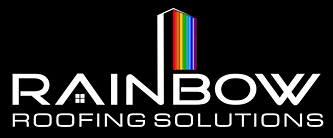Miami commercial roofing takes a beating thanks to the heat and UV rays of our tropical sun, torrential rains, high humidity and the occasional big blow that rolls in off the Atlantic. While our climate is the big draw for residents and tourists alike, we humans can duck inside when the weather gets to be too much to handle. The Miami commercial roof has no choice but to grin and bear it.
At some point in time all roofs are going to need serious attention. The most popular roofing material in America is the composite shingle because of its durability and availability in numerous colors. If you are considering reroofing your commercial property with composite shingles, here are a few items to look for when your roofer begins the job:
- At a minimum your roofing contractor should remove the existing shingles and tar paper. The plywood sheathing underneath should be inspected for rot and warping. Defective sheathing and flashing should be removed and replaced.
- New tar paper will be stapled to the sheathing starting from the bottom edge and aligned with the side of the roof. Sheets of tar paper should overlap at least 4″ to provide a line of defense against moisture getting to the sheathing.
- Unless you have a gabled roof, the next step is to install the “drip edge” along the eaves of the roof. A drip edge is an L shaped piece of tin or aluminum that’s placed on the edge of eaves to prevent rain from creeping back up and getting under the shingles. If you have a gabled roof the drip edge goes on last.
- Once the drip edge is in place your roofer is ready to start installing the composite shingles. Like most things in life, starting out right minimizes problems later on. Your starter row should be aligned with the side of the roof and overhanging the eave by ½ “. The shingles should be attached to the sheathing using 4 nails per shingle no more than 3 ½ ” from the edge of the eave. When the first row is complete, a second row is placed on top of the first row but nailed 5 ¾” from the eave. This gives you a solid front row of shingles.
- Now you are ready to shingle. Cut a shingle in half, line it up with the edge of the roof and secure it with 3 nails. This sets up the offset pattern for the row. Follow this technique for every other row and you will have shingles that are offset from the previous row providing the best protection from rain and wind. Ridge shingles finish off the job overlapping shingles that lead to the edge of the ridge or hip.
If you are using a licensed, qualified Miami roofing company who has experience with commercial roofing you shouldn’t have any issues. Investing in a new roof is really money in the bank when you consider the potential cost of damage done by wind and water if a roof fails. That new roof adds to the value of the property and gives you a nice secure feeling.


